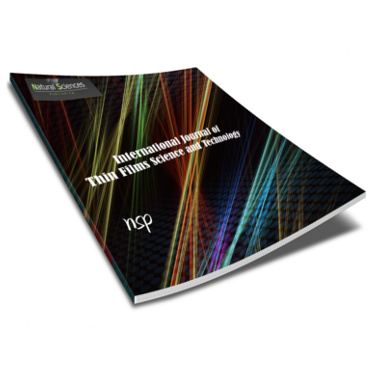International Journal of Thin Film Science and Technology

Abstract
In the present work, ZnS and Cu incorporated at (2%, 4%,6%, 8%, and 10%) thin films were growth onto hot glass substrates at substrates temperature 270 oC with thickness about 100 nm by chemical spray pyrolysis technique. The solutions of the spray consists of Zn(CH3COO)2.2H2O, SC(NH2)2 and CuCl2.2H2O with molar concentration 0.1M/L. The structure of the film was studied by XRD pattern, the results shows that the films were polycrystalline with cubic phase for pure ZnS and hexagonal phase for Zn1-xCuxS at x=10%. The optical constants, refractive index, n and extinction coefficient, k were determined The optical energy gap of the direct transition is also estimated, pure ZnS is 3.42 eV, and it increases as the Cu concentration increases from 3.49 to 3.67 eV. The room temperature photoluminescence (PL) of copper-doped zinc sulfide (ZnS:Cu) nanoparticles was studied. Through Gaussian fitting, the PL spectrum of undoped ZnS nanoparticles is deconvoluted into two blue luminescence peaks (centered at 411 nm and 455 nm, respectively), both of which can be attributed to the recombination of ZnS defect states. But for doped samples, a third peak at about 500 nm was also identified. Discussed the changes of all optical constants and PL spectra from the changes of optoelectronics microstructure parameters
Recommended Citation
Almohammedi, A.; Ashour, A.; and R. Shaaban, E.
(2022)
"Structural, Morphological and Optical Parameters of Zn(1-x) CuxS Thin Films for Optoelectronic Devices,"
International Journal of Thin Film Science and Technology: Vol. 11
:
Iss.
2
, PP -.
Available at:
https://digitalcommons.aaru.edu.jo/ijtfst/vol11/iss2/3

